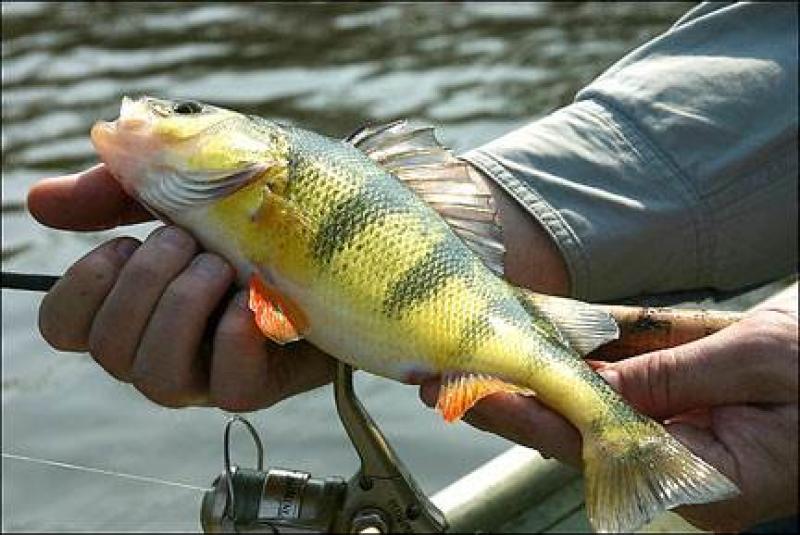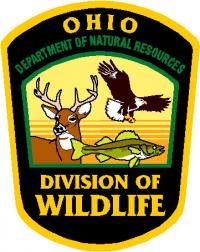Climate Change Impacts on Great Lakes Fishes

We have a vested interest in understanding how climate change and other human-driven stressors will influence the world’s aquatic ecosystems. This page provides some resources that can help to better understand the impact of climate change on the fish populations of the North American Great Lakes, as well as the fisheries that they support.
We appreciate your interest! Reach out to us with any questions.
Latest Resources -- Meet the Team -- Press -- Funding Sources
Latest Resources
"Short winters threaten fish populations"
Reductions in winter duration under climate change may have negative consequences for ectotherms (“cold-blooded” organisms) adapted to specific seasonal temperature regimes. Here, we show that short, warm winters reduce reproductive success for yellow perch, resulting in altered timing of spawning, low embryo hatch rates, and small larvae. These effects help, in part, explain poor recruitment of yellow perch in Lake Erie’s recreational and commercial fisheries.
"Climate Change Effects on Lake Erie Yellow Perch Reproduction and Recruitment"
Troy Farmer's PhD dissertation discusses the effect of climate change on Yellow Perch in Lake Erie through the lens of a more comprehensive historical analysis than what is described in the Nature Communications publication. For his dissertation, Farmer included invasive species, spawning stock size, ice cover, changes in the Lake Erie nutrient regime, and climate change as factors in a historical analysis of yellow perch recruitment success. He also outlines both experimental and modeling approaches used to explain potential patterns in reproductive success following short and long winters. Farmer's PhD work provided the foundation for the Nature Communications publication, noted above.
"Winter Warming Effects on Yellow Perch Reproduction and Recruitment"
This Great Lakes Fishery Commission completion report goes a step further than the Nature Communications publication (link above) by describing more intimiate details of the experiment as well as future climate modeling in light of the relationship between winter duration and yellow perch reproductive success. A full text version is available here: GLFC Completion Report - Farmer et al 2013.pdf
"Climate Change Impacts on Great Lakes Fishes" webinar
This Ohio Sea Grant webinar, featuring Stu Ludsin, highlights the expected impacts of climate change on Great Lakes fish communities, how interactions between climate change and other human-caused stressors may drive unanticipated change in Great Lakes fish production, and information gaps that will improve our ability to forecast the response of fish communities to climate change.
![]() IJC Report.pdf
IJC Report.pdf
Chapter of the April 2013 IJC Science Advisory Board "Taking Action on Lake Erie" Work Group Science Summary Report
In this International Joint Commission Report chapter, we discuss four primary ways by which climate change might interact with the delivery of nutrients and sediments from the watershed to influence the fish community of Lake Erie. Specifically, we expect climate-driven water warming and increased precipitation during winter and spring to promote development of bottom hypoxic (“dead”) zones, reduce water clarity, exacerbate harmful algal blooms, and alter invertebrate prey assemblages at the base of the food web. Each of these changes is expected to have a negative effect on Lake Erie fishes that are intolerant of eutrophic conditions (e.g., low water clarity and dissolved oxygen levels) when considered independently. However, these mechanisms have not been fully explored in the Lake Erie ecosystem, and understanding of their potential interactive effects with each and additional anthropogenic stressors (e.g., invasive dreissenid mussels) is lacking.
People, Climate Change, and Lake Erie
This four-year NSF-funded project is a partnership effort among six departments within the Ohio State University and Case Western Reserve University. The project is exploring how human behavior influences environmental conditions and ecosystem services in Lake Erie. Researchers are also examining how the lake's condition impacts human views of the lake and land management decisions in the watershed.
Meet the Team

Troy Farmer
Postdoctoral Fellow
Auburn University
farmetm@auburn.edu

Libby Marschall
Professor
Ohio State University
marschall.2@osu.edu

Konrad Dabrowski
Professor
Ohio State University
dabrowski.1@osu.edu

Stuart Ludsin
Associate Professor
Ohio State University
ludsin.1@osu.edu
Press
July 2015
- Ohio State University's Press Release
- Climate change a threat to Lake Erie yellow perch, says OSU researcher Stu Ludsin - cleveland.com
- Sea change based on evidence: warmer waters may mean LESS fish due to unexpected factors - The Speaker News
- Lake Erie perch face climate threats - The News-Herald
- 'No obvious quick fix' for declining yellow perch: study - CTV News
August 2015
- Buckeye Sportsman Radio Broadcast
- Like yellow perch? Hope for cold winters, study suggests - Windsor Star
- Climate change could make it hard for yellow perch to breed - CBC News Windsor
September 2015
- Climate change threatens perch, other warm-water fish - Great Lakes Echo
- Climate Change Is Not So Hot for Great Lakes Fish and Fishermen - takepart.com
Funding Sources

Ohio Department of Natural Resources - Division of Wildlife

Sport Fish Restoration Program

Investigators
Filters: Past, Population dynamics and life history, Recruitment mechanisms and early life history of fish, Human impacts on aquatic ecosystems and biodiversity, Ohio Division of Wildlife, Other
